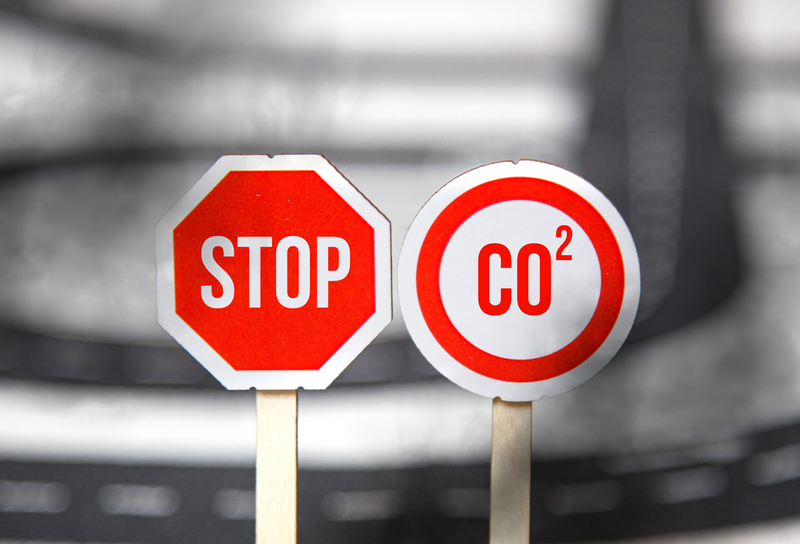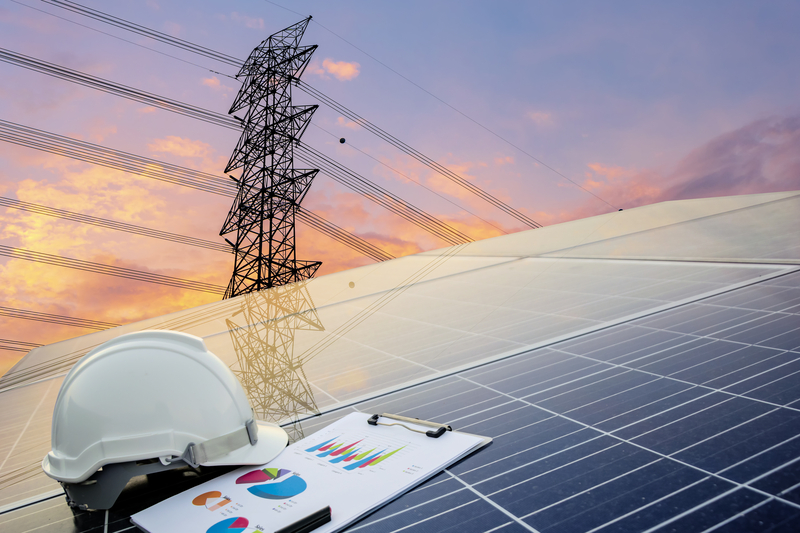How to Make Reducing Carbon Emissions a Priority
Reducing carbon emissions is key to combat climate change. With so many businesses and individuals interested in how to solve climate change we wanted to take some time to explain how you can make an impact.
In this article, we’ll cover all the basics of what carbon dioxide emissions from buildings are and why reducing greenhouse gas emissions is well worth the investment. We hope you find this information helpful and please be sure to reach out to us to learn how we can help you increase your energy efficiency and decrease your carbon emissions!
So if you’re ready to learn about how to combat climate change read on!
What Are Carbon Emissions?

Carbon emissions refer to the release of carbon dioxide into the air during the combustion of fossil fuels. They make up the majority of greenhouse gas emissions, which is the biggest cause of climate change. The amount of greenhouse emissions made by a building, city, country, and so on is known as its carbon footprint.
What causes carbon emissions?
CO2 emissions occur during the combustion, or burning, of fossil fuels such as coal, natural gas, and oil. Another huge factor is forest degradation. When trees are destroyed, their carbon is released into the atmosphere as carbon dioxide.
How do carbon emissions cause climate change?
High levels of carbon dioxide emission cause climate change by trapping heat from the sun close to the surface of the Earth, heating its temperature. Climate change is essentially the catch-all term for global warming, intensified natural disasters, rising sea levels, infertile soil for agriculture, and more.
Related Post: Energy Conservation Tips to Reduce Business Expenses
How Much Do Buildings Account for Carbon Emissions?

In 2019, energy consumption from all buildings – commercial and residential – indirectly accounted for over 30% of all US carbon emissions. This amount was an all-time high. 2020 would have probably looked similar, but US and world greenhouse gas emissions plunged as a result of the COVID-19 pandemic. Buildings contribute to emissions in two ways.
- Direct emissions are a result of burning fossil fuels like natural gas for heat.
- Indirect emissions are a result of using energy from power plants that burn fuel to generate electricity.
Directly, buildings account for about 12.5% of greenhouse gas emissions in the US.
How to Start Reducing Carbon Emissions

Reducing greenhouse gas emissions from buildings as a building owner is intimidating, to say the least. You’re in an unprecedented position. The good news is, you’re not alone. More and more companies are recognizing the need for change and calling for action.
However, just because you recognize the need doesn’t mean you know how to actually take action. That’s why we’re giving you some actionable items to implement as steps of your very own emissions reduction plan.
Review state guidelines for energy code compliance
President Biden’s recent commitment to reduce the carbon footprint of the United States and cut 50% by 2030 as part of the country’s pledge to the Paris climate agreement is not the only thing you need to be aware of. Each state has a set of energy codes for buildings.
The energy codes help in reducing carbon emissions from construction as well as buildings. State and local governments oversee energy code compliance, so be sure to research codes and benchmarking requirements for your area. This will help you get an idea of what your next steps should be.
If you’re a building owner in New York City, you’ll need to know about compliance with local laws, such as Local Law 97 which was created in an effort to combat the city’s extreme levels of CO2 emission. If you’re not in NYC, it’s still a good idea to read the requirements these local laws set there. They may not apply to you, but you’ll get a decent understanding of what to potentially expect from your own city in the future.
Start the switch to carbon-free energy
Carbon-free energy is found in green energy sources like hydro, wind, and solar power. These energy sources do not emit carbon dioxide when they’re converted into electricity. You can reduce carbon dioxide emissions from buildings directly by doing things such as installing solar panels and switching from natural gas.
For this step, it’s a good idea to include your energy provider in the conversation. If they’re anything like we are at Aggressive Energy, they’ll help you identify any areas in your energy infrastructure that could be done cleaner and more sustainable. If they’re not like us, give us a call and we’ll get you on the right track!
Set specific (but attainable) goals
Remember, you don’t have to come up with a detailed plan in one sitting. On the other hand, you also shouldn’t wait much longer to get started. There are plenty of ways you can start small. After doing your research, start assessing your current energy infrastructure. Your plan may be pretty straightforward, or it might require a bit of time and investment.
Whichever it is, take it step by step and create a plan to reduce emissions that’s sustainable to your business. Break down the overarching goal into separate milestones big or small, then hold yourself accountable to reaching them
Is Reducing Carbon Emissions Worth The Cost?

The only perceivable downside to fighting climate change is the upfront cost. However, the future of our planet depends largely on the actions we take to reduce greenhouse gas emissions over the next decade.
The cost may still seem alarming, but keep in mind the return on investment will counteract that in the long run. Renewable resources will cost your business less than if you were to continue to use fossil fuels.
That’s not the only long-term benefit, either. The Biden administration is placing a lot of emphasis on creating clean energy industry jobs through their efforts to combat climate change. Investing in reducing carbon emissions is also an investment in the clean energy industry that creates jobs in your community.
When creating a plan to make carbon-free energy a priority, having an experienced energy provider will save you an abundance of stress. At Aggressive Energy, we’ll help you set and meet even the most ambitious energy management goals at a pace that works best for you.
We understand the commitment it takes to power a business, which is why we’re committed to giving our customers value-added services like 24/7 customer support. Whatever it is, we’ve got the resources to get you where you want to be.
Contact us today to learn how we can work for you!